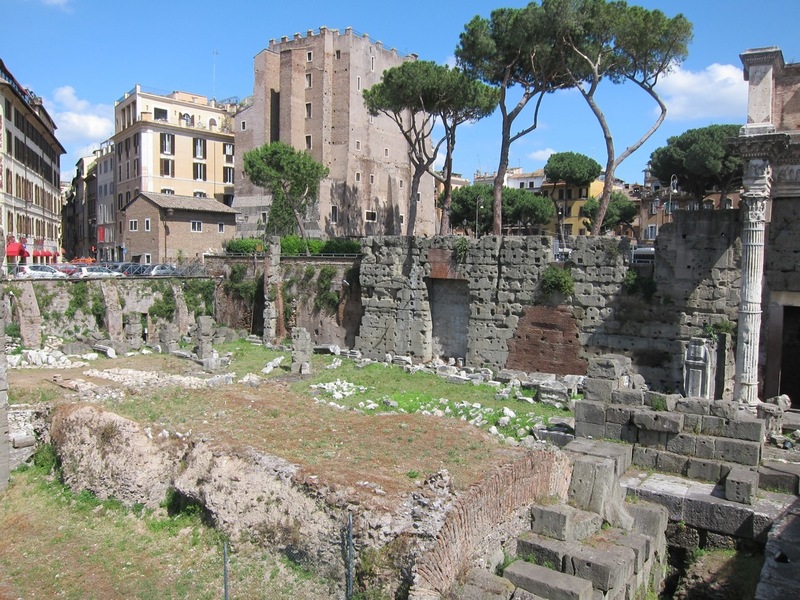Survival
The Forum of Domitian retained its ancient appearance for longer than the other fora, because it remained an important point of transit between the Roman Forum and the Subura. However, it was frequently flooded by the clogged Cloaca brook running beneath it, and the site disintegrated over time.
9th century: the Via Argiletum was repaved in the first half of the 9th century; two wealthy, large two-story domus, houses, were built at its sides.
11th century: these rich domus were despoiled and replaced with humbler forms of housing; the site became the Fundicus Macellorum de Archanoe, lined with butcher shops and modest dwellings.
1425-1527: the stone of the Forum was quarried.
1576: any remaining statuary was removed and sold to the Commune.
1592: the temple marble was stripped for St. Peter’s and for the Borghese Chapel.
1606: the temple was fully razed for marble for Pope Paul V’s Acqua Paola.
17th century: the Arcus Aurae, the arch southeast of the temple, was destroyed.
1882-3: Lanciani studied the extant colonnade and used ancient sources to draw a plan of the Forum.
1913: Excavations.
1926-8: Excavations.
1932: Mussolini’s building of the via dell’Impero cleared the streets and houses built into Le Colonnacce.
1932-41: Excavations.
1980-1989: Excavations.
The surviving remains of the Temple of Minerva include its foundations, the right side of the podium of the pronaos, and the vault in the opus caementicum that supported the cel (probably set in an apse). Other remains of the Forum include a section of the precinct wall with marble colonnade (Le Colonnacce), and the foundations of Porticus Absidata.
